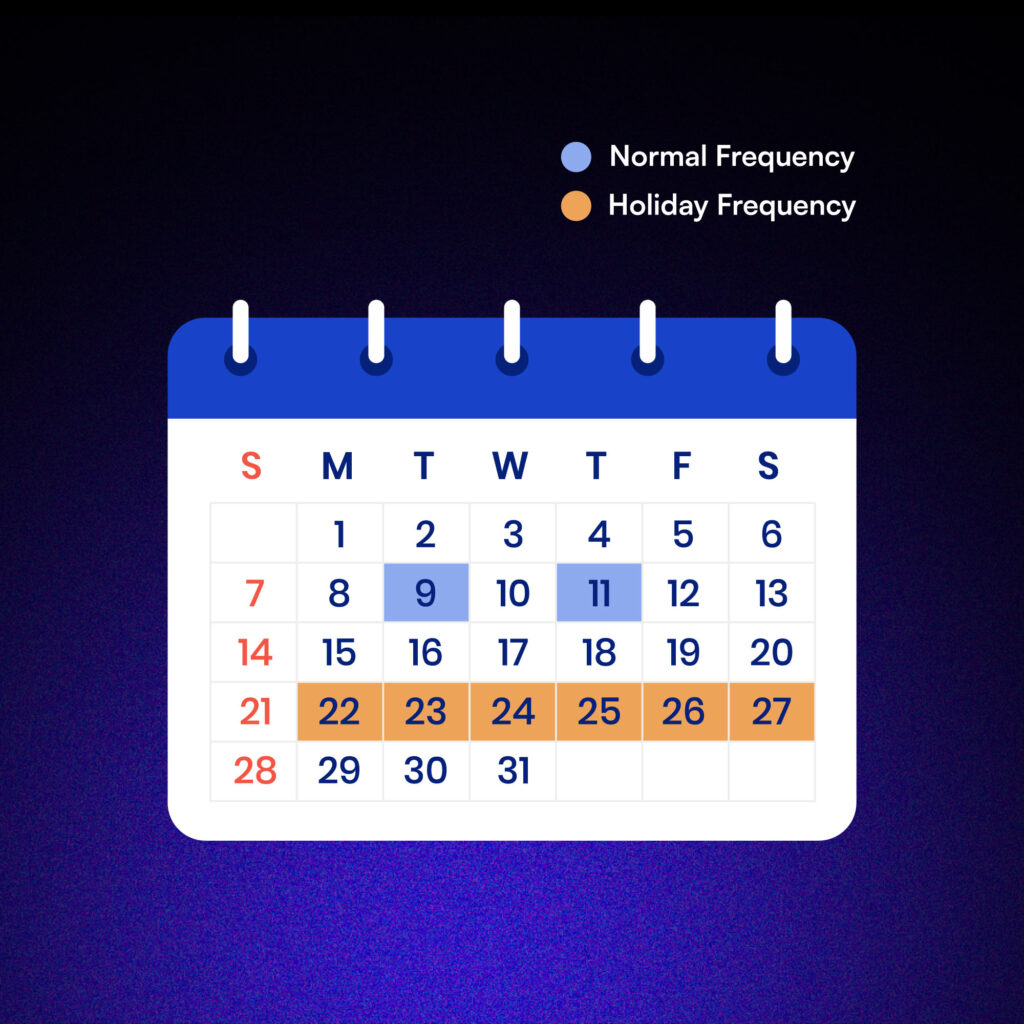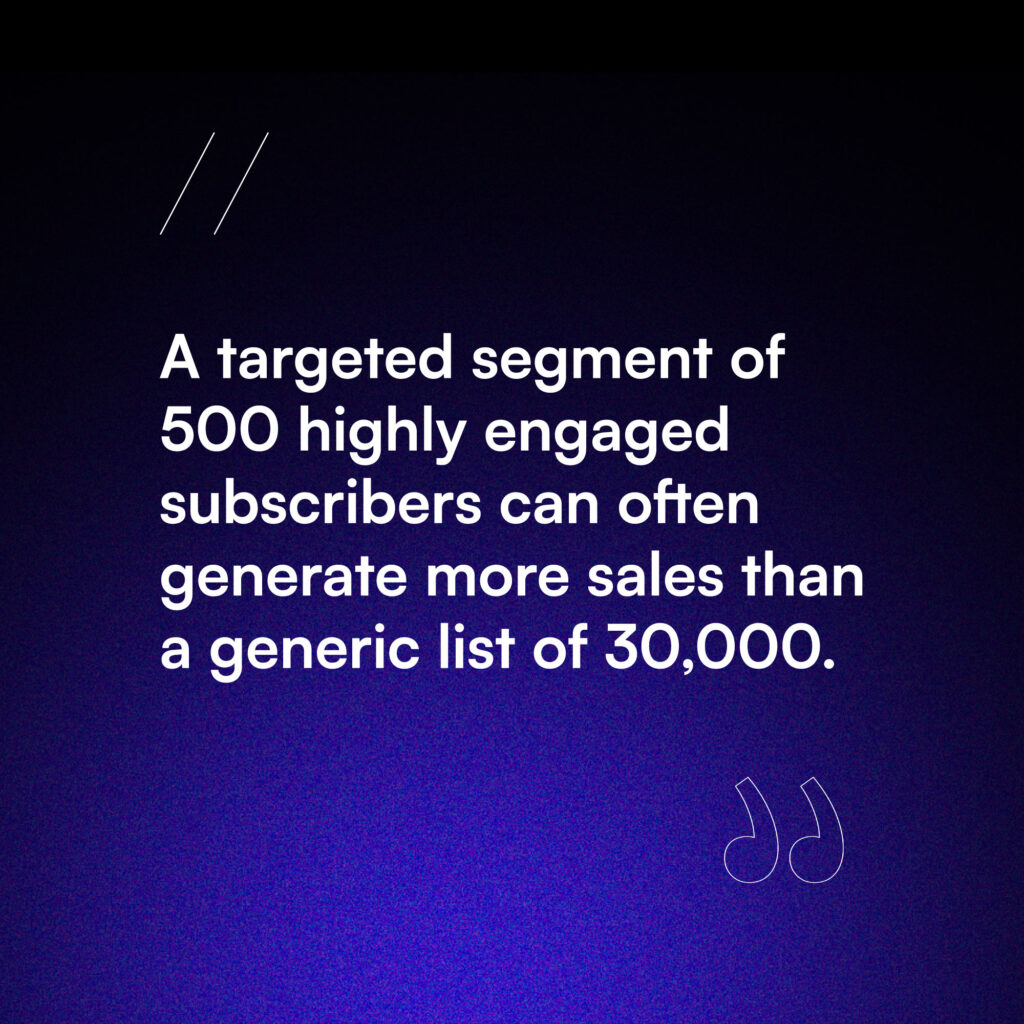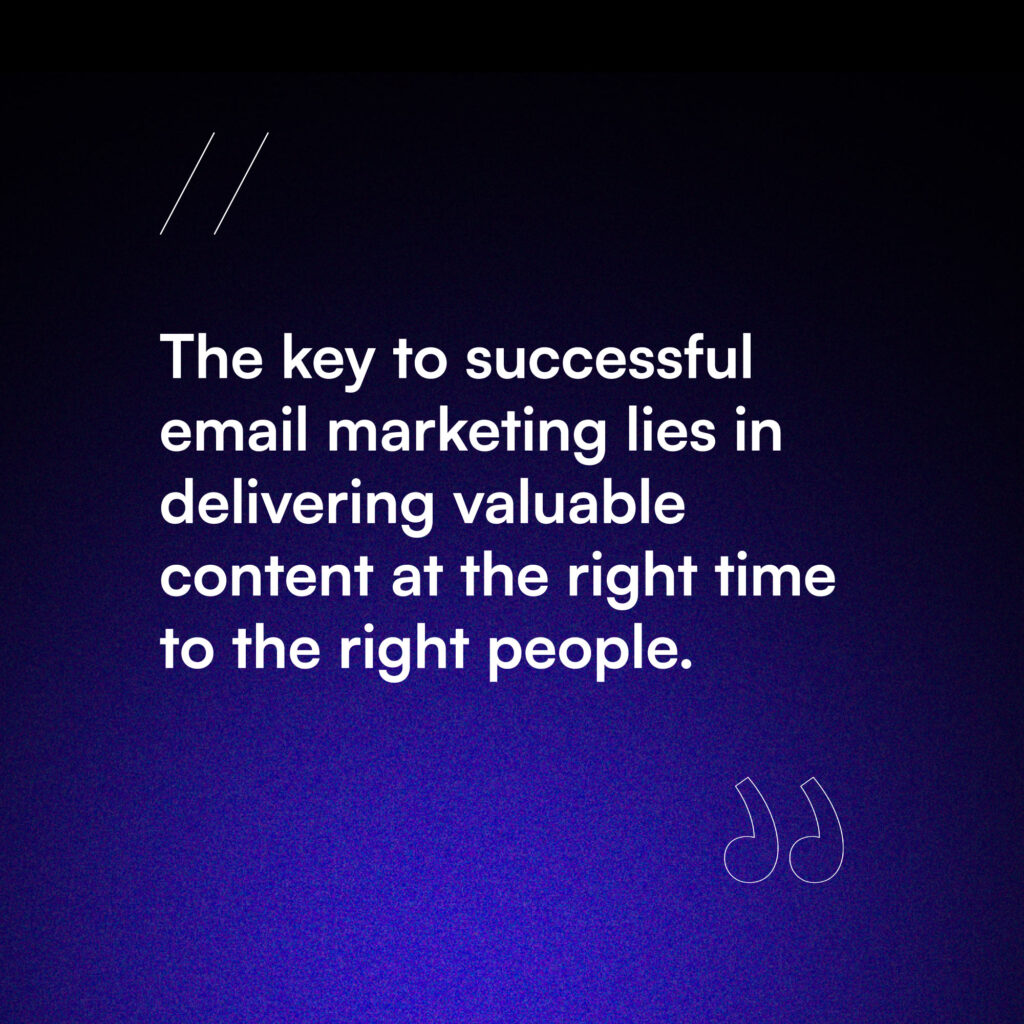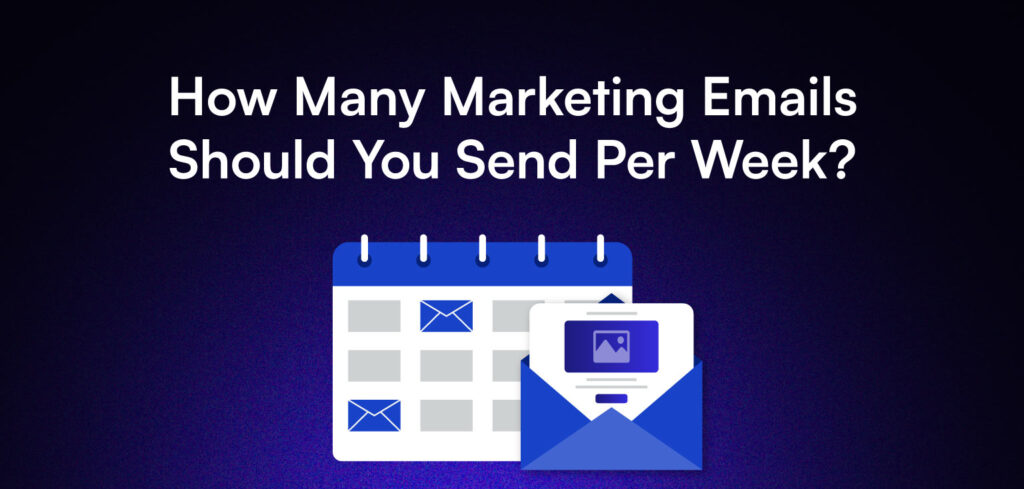Are you wondering how many marketing emails should you send per week? Well, a lot of other people do too.
Striking the perfect balance between staying top-of-mind and overwhelming your subscribers is a challenge every marketer faces. Send too few, and you risk fading into obscurity; too many, and you’ll watch your unsubscribe rates soar. Let’s dive into email frequency to find the sweet spot for your business.
How many marketing emails should you send per week?
A general consensus suggests sending 2-4 marketing emails per week. This frequency often strikes a balance between staying top-of-mind and avoiding inbox clutter. However, this number isn’t set in stone.
Periods like Black Friday, Cyber Monday, and the Christmas holiday season may justify increasing frequency to 4-6 emails per week to capitalize on heightened consumer interest.

Sending too many emails can have detrimental consequences. Aside from irritating subscribers and increasing unsubscribe rates, it can also lead to increased email marketing costs for minimal returns. It’s essential to weigh the potential benefits against the costs to ensure a positive ROI.
Signs you're sending too many emails
Recognizing the symptoms of email fatigue is crucial for timely adjustments. Watch for these indicators:
- Decreasing open rates: A consistent decline in open rates suggests subscribers are losing interest.
- Rising unsubscribe rates: A sudden spike in unsubscribes is a clear red flag.
- Lower click-through rates: If fewer people are clicking on your email content, it might be time to reassess frequency.
- Negative feedback: Direct complaints about email volume are a direct signal of dissatisfaction.
What is the best day of the week to send marketing emails?
Timing is everything in email marketing. According to Klaviyo’s 2023 analysis, Wednesday and Thursday generally yield the best results. However, this can vary based on your target audience and industry. Experimentation is key to finding the optimal send time for your specific circumstances.

Segmentation for Email Frequency
Segmentation is a powerful tool for optimizing email frequency. By dividing your email list into smaller, more targeted groups based on factors like demographics, purchase history, and engagement, you can tailor email frequency to each segment’s preferences.
For instance, high-value customers might appreciate more frequent updates, while new subscribers may benefit from a more gradual email cadence.
Remember, a targeted segment of 500 highly engaged subscribers can often generate more sales than a generic list of 30,000. By sending relevant content to the right people at the right time, you can significantly improve campaign performance.

A/B Testing for Email Frequency
A/B testing is a cornerstone of email marketing optimization. When it comes to determining your ideal email frequency, A/B testing can provide invaluable insights.
How to Conduct an A/B Test for Email Frequency
- Define Your Goals: Clearly outline what you want to achieve with the test. Is it to increase open rates, click-through rates, conversions, or reduce unsubscribe rates?
- Create Two Email Variations: Maintain identical content and subject lines for both emails, except for the send frequency. One group will receive emails at your current frequency, while the other group will receive emails at the test frequency.
- Segment Your Email List: Divide your email list into two equal groups. Ensure the groups are similar in terms of demographics, behavior, and engagement to minimize biases.
- Monitor and Analyze: Track key metrics for both groups over a specific period. Compare the performance of each variation to determine which frequency is more effective in achieving your goals.
Key Metrics to Track
- Open rates: Compare how often emails are opened in each group.
- Click-through rates: Measure the percentage of recipients who click on links within the email.
- Conversion rates: Track the number of desired actions (e.g., purchases, sign-ups) generated by each group.
- Unsubscribe rates: Monitor the number of subscribers who opt out of your emails.
- Revenue generated: Calculate the total revenue generated by each group.
A/B Testing Tips
- Start Small: Begin with a small test group to minimize risks and gather initial data.
- Isolate Variables: Focus on testing email frequency alone. Avoid making other changes to the email content or design during the test.
- Test Different Frequency Increments: Experiment with varying send frequency differences to find the optimal increment for your audience.
- Iterate and Refine: Continuously analyze test results and adjust your email strategy based on the findings.
Other Considerations for A/B Testing
- Audience Segmentation: Consider conducting A/B tests on different segments of your email list to identify optimal frequencies for specific groups.
- Time of Year: Seasonal factors can influence email performance. Account for these variations in your testing.
- Email Content: The type of content you send can impact the optimal email frequency. For example, promotional emails might require a different frequency than informative newsletters.
By carefully executing A/B tests and analyzing the results, you can optimize your email frequency for maximum impact and build stronger relationships with your subscribers.

Ready to Optimize Your Send Frequency?
If you’re still asking how many marketing emails should you send per week, you know now that finding the optimal email frequency is a delicate balancing act. While there are general guidelines to follow, the ideal number of emails per week ultimately depends on your audience, industry, and campaign goals.
Remember, the key to successful email marketing lies in delivering valuable content at the right time to the right people.
Read this next: 7 Effective Subject Line Formulas to Boost Your Open Rates


